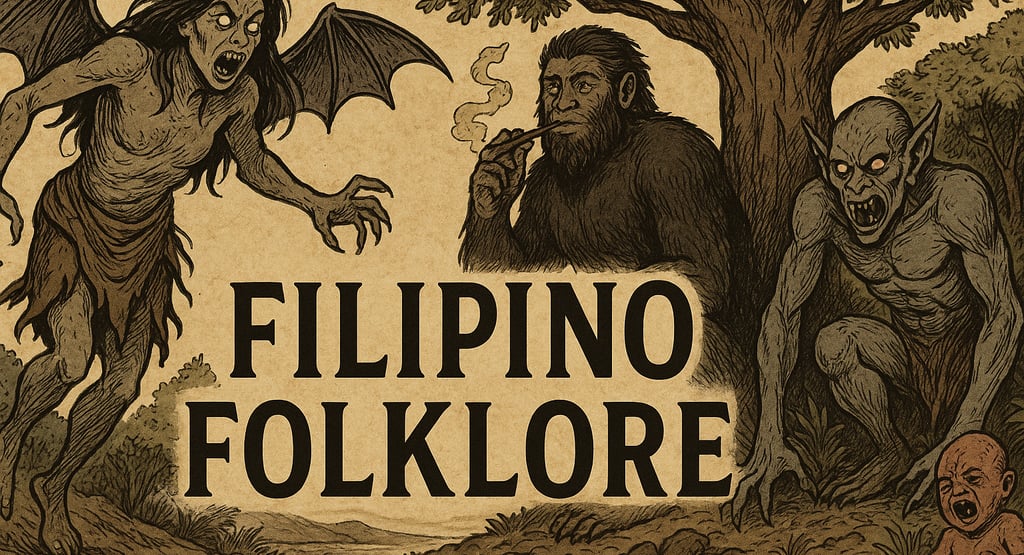Exploring Filipino Folklore and Stories: A Glimpse into the Philippines' Rich Tradition
Discover the rich world of Filipino folklore and stories. From mythical creatures like the manananggal and aswang to ancient gods and goddesses, explore the legends that have shaped Filipino culture for generations.
ARTICLEORIGINAL MANGA SERIES
ECJ Novel
6/30/20252 min read


Exploring Filipino Folklore and Stories: A Glimpse into the Philippines' Rich Tradition
The Philippines, an archipelago of over 7,000 islands, is home to a vibrant culture steeped in myths, legends, and folklore. These stories, passed down through generations, offer a fascinating glimpse into the beliefs, fears, and values of the Filipino people. From creatures lurking in the shadows to gods and goddesses who shape the world, Filipino folklore is a tapestry of creativity, history, and imagination.
Monsters and Mythical Creatures
One of the most captivating aspects of Filipino folklore is its rich array of mythical creatures. Some are malevolent, while others are benign, but all play important roles in shaping the country's folklore. Here are a few of the most well-known:
Manananggal: A terrifying creature often depicted as a woman who can separate her upper torso from her lower body and fly through the night, searching for victims to drain their blood.
Aswang: A shape-shifting creature, the aswang is often considered a combination of a vampire, werewolf, and witch, depending on the region. It is feared for its ability to disguise itself as a human during the day, only revealing its monstrous form at night.
Kapre: A large, tree-dwelling creature, the kapre is often described as a giant smoking a cigar. Though generally not hostile, it is known to mislead travelers and cause them to get lost in the forest.
Tiyanak: A creature that takes the form of a baby, crying in the wilderness to lure unsuspecting victims. Once approached, the tiyanak reveals its true form and attacks.
Legends of Gods and Goddesses
Filipino folklore also boasts an extensive pantheon of gods, goddesses, and other divine beings. These deities were believed to control natural forces and guided the lives of the ancient Filipinos. Some of the most famous include:
Bathala: The supreme god in Tagalog mythology, often considered the creator of the universe.
Lakapati: The goddess of fertility, often revered by farmers for her ability to bless their crops with abundance.
Anitun Tabu: The goddess of wind and rain, known to control the weather and bring favorable conditions for farming.
The Importance of Folklore in Filipino Culture
Filipino folklore has always been more than just entertainment; it is a window into the values and customs of the Filipino people. These stories teach lessons about respect for nature, the importance of community, and the consequences of one’s actions. They reflect the fears and hopes of the people, and through the ages, they have influenced Filipino art, literature, and even modern-day media.
Today, folklore remains a cherished part of Filipino culture. While many of these stories are shared around campfires or passed down within families, modern adaptations in films, books, and television have introduced these creatures and legends to a new generation. Filipino folklore continues to evolve, blending traditional elements with contemporary storytelling.
Conclusion
The folklore of the Philippines is a treasure trove of mythical creatures, gods, and stories that reflect the unique culture and beliefs of the Filipino people. These tales have endured for centuries, captivating the imagination of generations, and continue to inspire both young and old today. Whether it’s through tales of mysterious creatures lurking in the dark or gods that shaped the world, Filipino folklore remains an integral part of the country’s heritage and its people’s collective consciousness.
